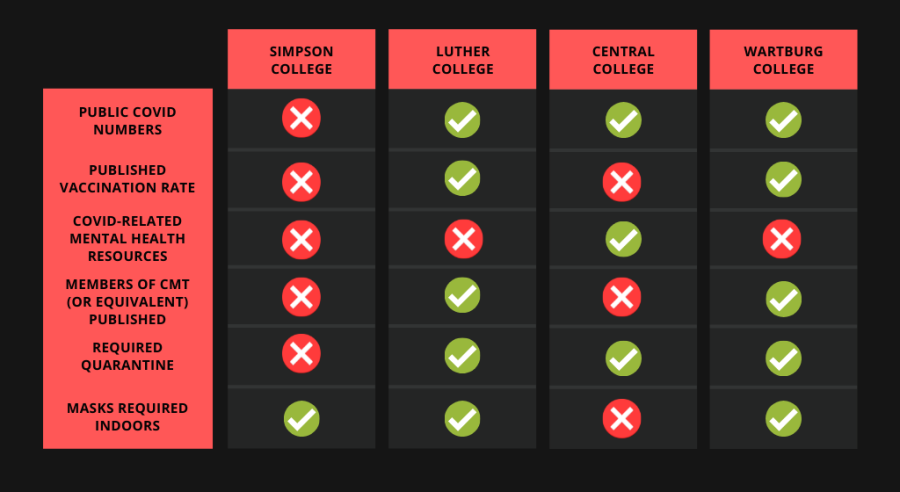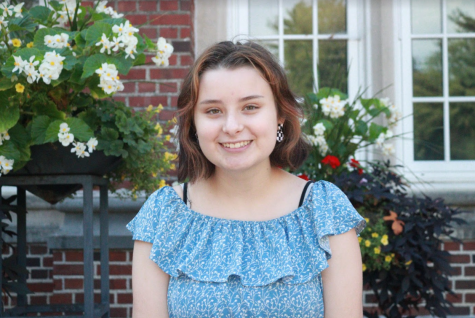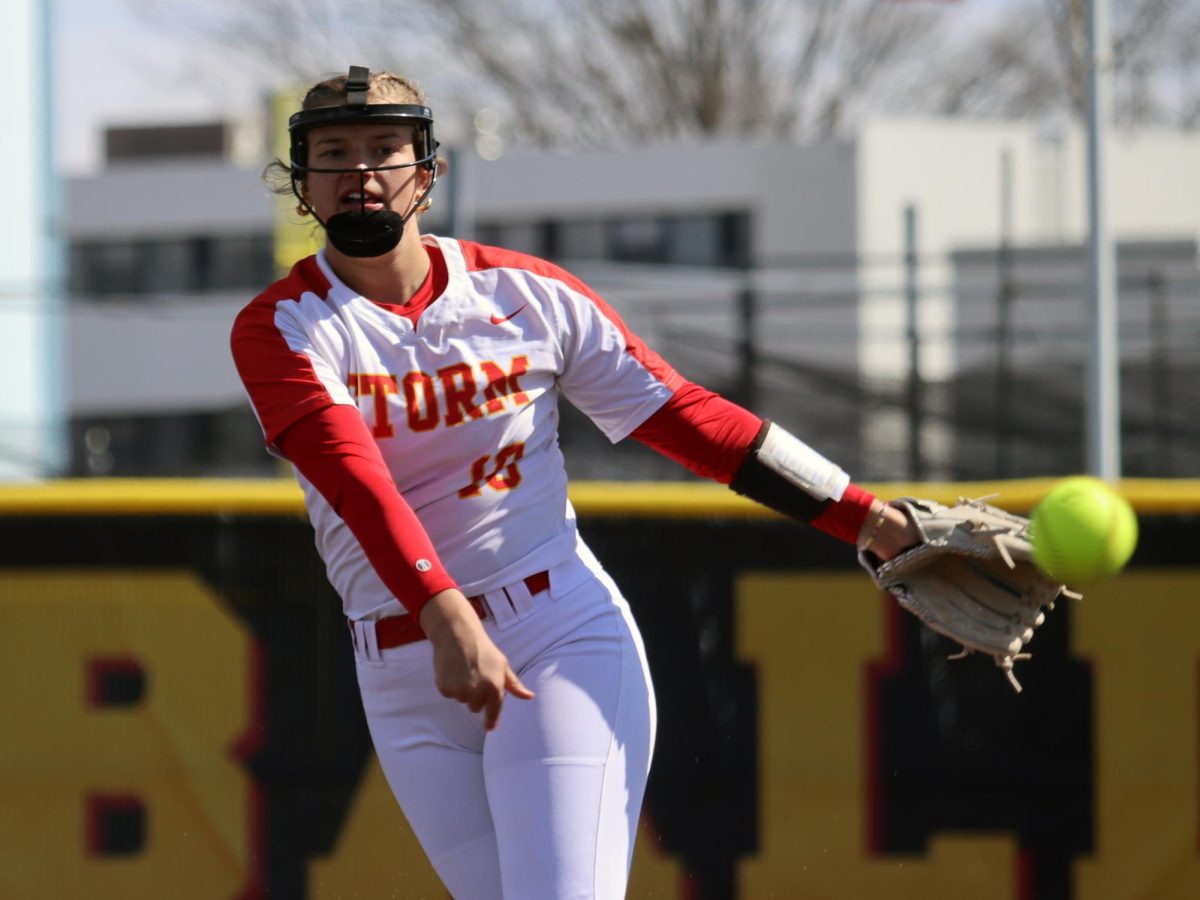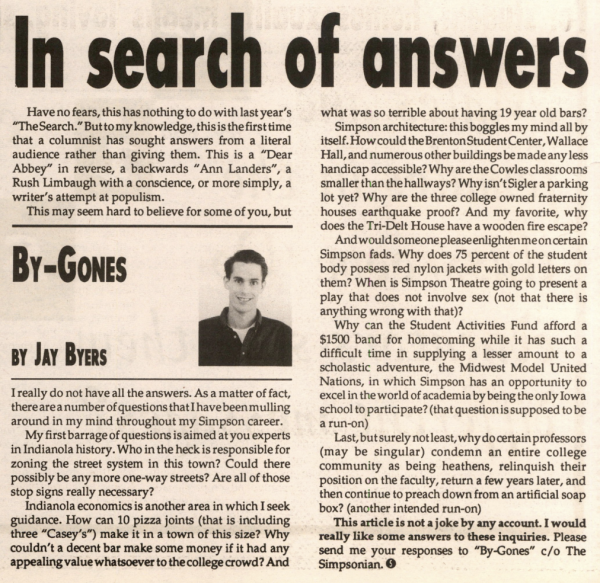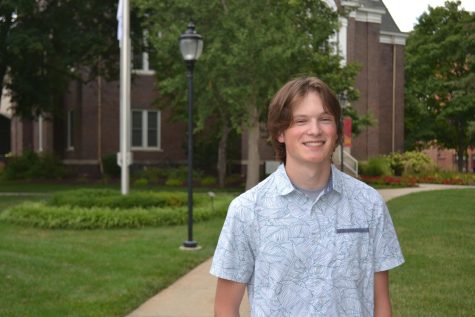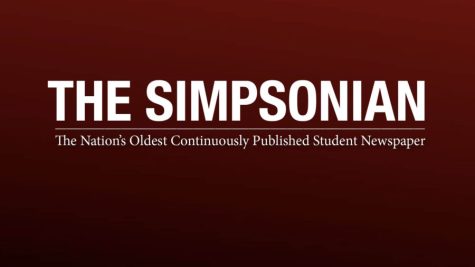Our View: Simpson College needs to start being more clear about COVID-19
A visual comparison of Simpson College, Wartburg College, Central College and Luther College’s COVID-19 policies.
February 2, 2022
How do Simpson College’s COVID-19 policies compare to other schools in the American Rivers Conference? We’re glad you asked. To be frank, not well.
The COVID Management Team’s (CMT) recent decision to eliminate quarantine for anyone who’s been exposed to COVID-19 regardless of vaccination status has been a hot topic of discussion around the campus community.
It is not enough to “strongly encourage” quarantining; this decision shows a clear disregard for students’ safety and health. It also is not entirely supported by the protocols established by the Centers for Disease Control. It’s also a decision that several other Iowan schools in our section of the American Rivers Conference don’t include in their COVID-19 policy guidelines.
Simpson also is slow to update the COVID-19 section of the website. Simpson’s COVID policies are not clearly illustrated on its website and have not been for some time now. It was actually difficult to fact-check this article because of this. All of the COVID-19 policy information comes from emails sporadically sent from the CMT to the campus community when they decide to send them.
CMT’s meetings are also not publicly available nor are the meeting minutes. There are two student representatives on CMT, the Student Government Association (SGA’s) President and Vice President. No Community Advisors (CAs) are on CMT despite being the people expected to enforce the policies that CMT decides.
During the Jan. 26 SGA meeting, CMT members were asked to explain which color phase the college was operating in. The college’s website indicated that we were in the yellow phase; however, apparently, the college has not been operating in any color phase this semester.
As of Jan. 31, the color phases from the previous two years have now been officially dropped, or as CMT says “sunsetted.” There is no longer a clear phasing policy.
According to Wartburg College’s COVID-19 dashboard, an unvaccinated individual or an individual who is eligible for but has not received a booster shot who has been exposed to COVID-19 will stay at home or in their residence hall room while separating themselves from others and monitoring health. They will be contacted daily to assess symptoms and health status. Individuals will remain in quarantine for five days from the point of exposure and can be released only if they have no symptoms and have proof of a negative test.
Buena Vista’s quarantine policy is identical, so is Central College’s and so is Coe College’s.
These four colleges also have their COVID-19 dashboards publicly available and up-to-date on their websites. Simpson College’s COVID-19 dashboard has never been publicly available besides The Simpsonian’s weekly reporting.
Wartburg’s COVID-19 dashboard even explains how the positivity rate is calculated, Simpson College’s does not.
CMT’s guidelines do somewhat align with the CDC’s. The CDC still recommends that anyone who is not up-to-date on vaccinations should quarantine after coming in close contact with someone who is COVID positive, but CMT cites the low positivity rate amongst those who quarantine as a reason to eliminate the post-exposure quarantine period altogether.
If one is up-to-date on COVID vaccinations and was exposed, the CDC says that quarantine post-exposure is not necessary unless the person develops symptoms. The CDC still maintains that anyone who tests positive for COVID-19 needs to isolate for 5 days and mask in public for five more days, if asymptomatic. Under the new Simpson College policy, no one needs to quarantine post-exposure, even if they’re unvaccinated.
A negative result does not rule out COVID, and the FDA says a negative test should not be the sole basis for “patient management decisions.” In an email sent Jan. 20, signed by Heidi Levine, the CMT concluded that fewer than 10% of students went on to develop COVID symptoms, but fewer than 10% still poses a potential risk to vulnerable persons on campus.
Rapid antigen tests, which is primarily how people are being tested, are only 78.9% accurate on average compared to PCR tests done in a lab which are 98% accurate. In the early and final days after infection, the viral load is low and often does not detect the virus. Basically, a negative test can indicate there’s not enough viral load to be detected.
One study found that most omicron cases were infectious for several days before being detectable by an antigen rapid test. This study suggests that “rapid tests may not be fit-for-purpose in routine workplace screening to prevent the asymptomatic spread of Omicron.”
The same study found that the two days following a positive PCR test, all of the antigen rapid tests produced negative results. Researchers in the study were able to confirm that four infected people in the study transmitted the virus to others during the period before their positive rapid test. These were confirmed through contract tracing and epidemiology investigation, but scientists suggest there are likely more transmissions that went unaccounted for.
The results of this study have yet to be reviewed by outside researchers, but the results from the study are consistent and have others studying COVID testing agreeing.
The FDA even announced that data suggests these tests have reduced sensitivity to the Omicron variant, meaning that false negatives are more likely with the surge of Omicron. Additionally, the FDA recommends those who test negative on a rapid antigen test should take a PCR test if they have symptoms or have been exposed to infection.
Furthermore, it is near impossible to ensure that those who have been in close contact with a positive COVID case wear a mask around others. Virtually no one enforces masks around campus as is; they aren’t suddenly going to because of the new rules.
Since early in the pandemic, when the college first reopened, students have been expected to do much of the enforcement, despite assurances from Simpson that faculty and staff would be doing so. We have seen professors, administration, food service workers and even the president flout enforcement of masks, only adding to the confusion of when masks were acceptable and when they were not.
Students aren’t devoid of blame, either. Student leaders on campus – such as some Greek house executives – have been part of the problem, either overlooking violations or encouraging them, to disastrous results. CAs in other residential buildings, on the other hand, have been overwhelmed by obstinance and resistance from their residents, resulting in instances of social ramifications.
One could say this is unsurprising, considering the undeniable culture of entitlement, fragility and hyperindividualism that has permeated much of the student body for years.
If we’ve learned anything from the AIDS crisis, it’s that moralizing illness is absurd and harmful. It is pointless to shame someone for having COVID, and it is inhumane to wish it upon others as retribution. But it is inexcusable that unsafe conditions on campus – brought about by nothing short of willful irresponsibility, ignorance, greed and privilege – are inflicting increased risk upon its occupants, especially those of elevated risk, such as Black, Indigenous, disabled and immunocompromised people.
As of Jan. 31, there have been more cases in the first month of classes than we have ever had before, yet CMT continues to loosen restrictions.



